ASUS once again shocked the masses with another ZenBook Pro, this time around their gimmick was to add a secondary screen on top of powerful internals. Say hello to the ZenBook Pro 15 (UX580), a thin and light that still packs a punch but has a touchpad screen dubbed as the ScreenPad. We got to play with this beauty here at Computex 2018 and here are our initial thoughts.
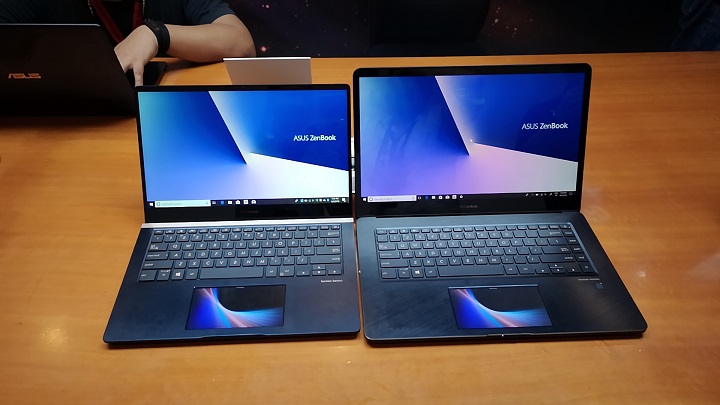
The ZenBook Pro 15 (UX580) retains much of the design structure of its predecessor, a thin and light frame with the signature Zen-inspired spun metal finish. Despite the similarities in design, the UX580 actually has a more elegant deep blue color with rose gold accents. It’s still thin, light, and overall very stylish.
The ZenBook Pro 14 (UX480), is no different, it’s basically just a smaller UX580 with the same sexy frame and sophisticated design.

There’s no noticeable change in the display for both either, we still have a pretty high-quality IPS panel with vivid colors, good color accuracy, thin side bezels, and stylus support. Overall, a pretty satisfying screen for an immersive viewing experience, and maybe even color accurate work.

The keyboard of the ZenBook Pro 14 and 15 received a slight make-over though and now features gold backlit keys instead of silver. Other than that, we still get the same TKL setup with good travel distance and excellent tactile feedback.
Now, this is where it gets kind of exciting. The trackpad of the ZenBook Pro 14 and 15 doubles as a secondary screen dubbed the ScreenPad. Once activated, you can use it as a secondary extended display, much like a secondary monitor or as another screen for other activities. The screen currently supports only a few desktop apps such as Microsoft Word but ASUS is promising software updates to include more.
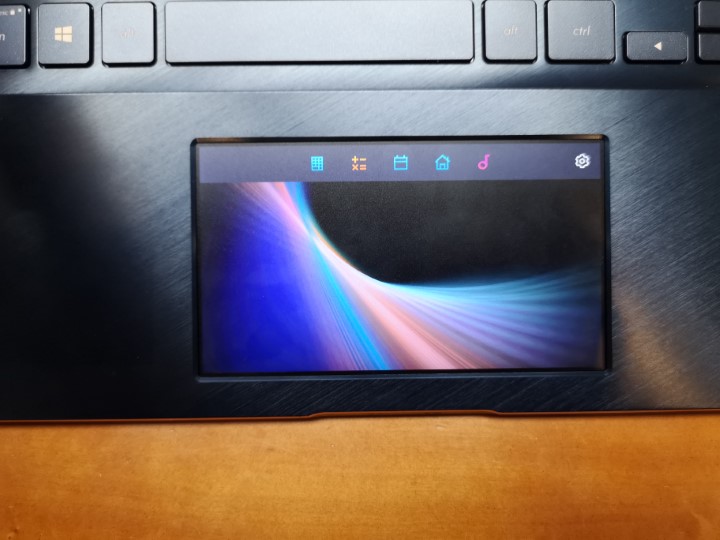
It also has its own app ecosystem of customized programs such as a calculator and music player. If you’re up for it, the screen can be a browser extension and supports YouTube player for Chrome. Other than that, we have ASUS Sync support for smartphone integration. Sadly, unlike the display, the ScreenPad is without stylus support.
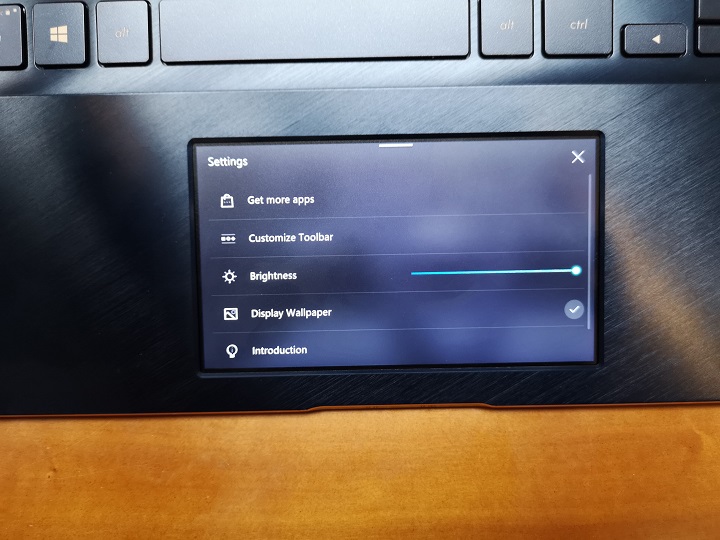
This is not our first time seeing a touchpad be transformed into a secondary screen, Razer has already dipped their toes in this venture with their Razer Blade. Even ASUS to some degree has done it with the Zephyrus, although that’s only for NumPad functionalities. Still, it’s fun to see new ways of doing work with a notebook, and this implementation may even be more immersive than that of Razer’s.
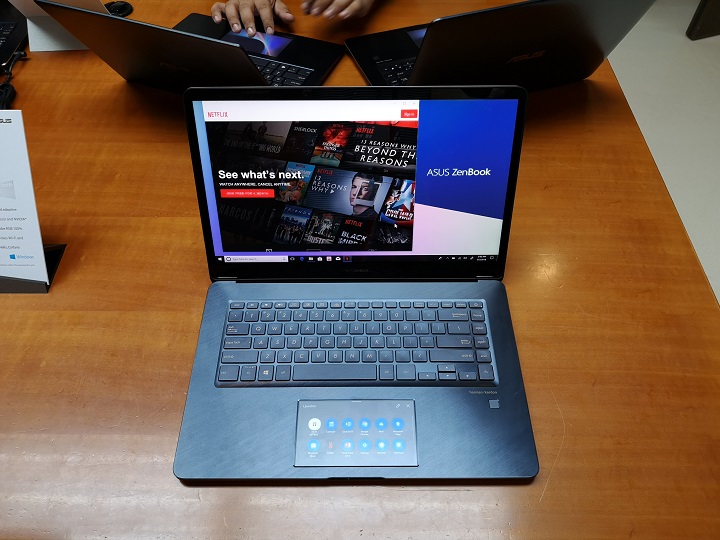
We have different internal setups for the ZenBook Pro 14 and 15. The bigger Pro 15, is equipped with either an Intel Core i9-8950HK or a Core i7-8750HQ CPU, an Nvidia GeForce GTX 1050 Ti, and up to 16GB of DDR4 RAM. This kind of setup, while not overly powerful, is still impressive considering the size and weight of the laptop. Then again, we did encounter heating issues with the previous generation that sports almost the same yet cooler internals. So it’ll be interesting to put the ZenBook Pro 15 to its paces.
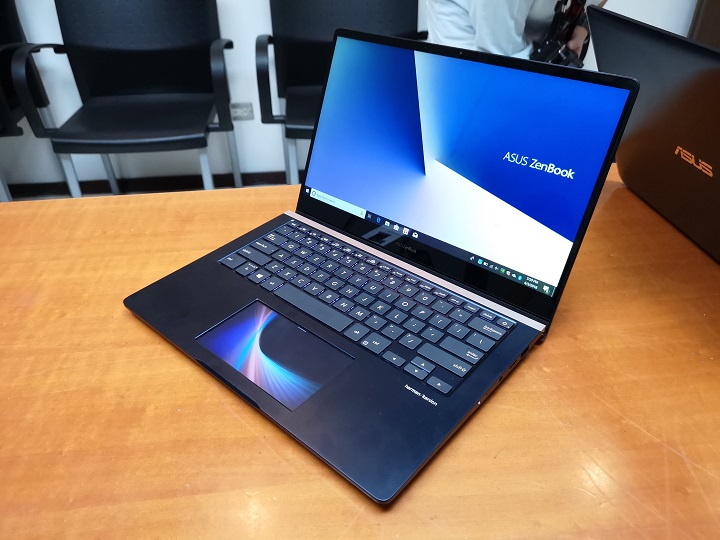
The ZenBook 14, on the other hand, is powered by Intel’s 8th generation Core i7 quad-core processor, Nvidia’s GeForce GTX 1050 Max-Q GPU, and up to 16GB of DDR4 RAM. Overall performance will be lower but heat management shouldn’t be that much of a problem.
The ZenBook Pro 14 and 15 is certainly an interesting duo, equipped with powerful internals, a cool new gimmick, and a sophisticated and stylish design. They come at quite a high price though and heat issues are still an impending threat.

The ZenBook Pro 15 will be available this June 2018 in all ASUS concept stores nationwide. It come in three variants — 4k UHD with 16GB RAM and 1TB PCIe SSD (Php 134,995USD 2,300INR 195,014EUR 2,191CNY 16,753), Full HD with 16GB RAM and 1TB PCIe SSD (Php 119,995USD 2,045INR 173,345EUR 1,948CNY 14,891), and a Full HD with 16GB RAM and 512GB PCIe SSD (Php 104,995USD 1,789INR 151,676EUR 1,704CNY 13,030).
The ZenBook Pro 14, on the other hand, will officially launch later in 2018. Pricing and availability were yet to be announced.

YugaTech.com is the largest and longest-running technology site in the Philippines. Originally established in October 2002, the site was transformed into a full-fledged technology platform in 2005.
How to transfer, withdraw money from PayPal to GCash
Prices of Starlink satellite in the Philippines
Install Google GBox to Huawei smartphones
Pag-IBIG MP2 online application
How to check PhilHealth contributions online
How to find your SIM card serial number
Globe, PLDT, Converge, Sky: Unli fiber internet plans compared
10 biggest games in the Google Play Store
LTO periodic medical exam for 10-year licenses
Netflix codes to unlock hidden TV shows, movies
Apple, Asus, Cherry Mobile, Huawei, LG, Nokia, Oppo, Samsung, Sony, Vivo, Xiaomi, Lenovo, Infinix Mobile, Pocophone, Honor, iPhone, OnePlus, Tecno, Realme, HTC, Gionee, Kata, IQ00, Redmi, Razer, CloudFone, Motorola, Panasonic, TCL, Wiko
Best Android smartphones between PHP 20,000 - 25,000
Smartphones under PHP 10,000 in the Philippines
Smartphones under PHP 12K Philippines
Best smartphones for kids under PHP 7,000
Smartphones under PHP 15,000 in the Philippines
Best Android smartphones between PHP 15,000 - 20,000
Smartphones under PHP 20,000 in the Philippines
Most affordable 5G phones in the Philippines under PHP 20K
5G smartphones in the Philippines under PHP 16K
Smartphone pricelist Philippines 2024
Smartphone pricelist Philippines 2023
Smartphone pricelist Philippines 2022
Smartphone pricelist Philippines 2021
Smartphone pricelist Philippines 2020